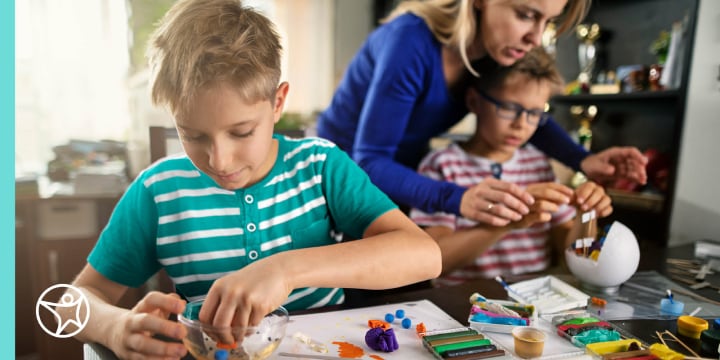5 Science Experiments Where Children Use Their Sense To Observe
by Valerie Kirk
3 min to read
Hands-on learning taps into something teachers have always known: children learn best when they are actively engaged with the learning activity. What better way to keep them engaged—and learning—than with a hands-on science experiment?
Doing science experiments also helps improve children’s observation skills, which leads to observational learning, an ability that will help them throughout school—and life. In fact, observation is a critical part of the first step of the scientific method, which begins when students ask questions about things they can observe.
To spark your student’s curiosity about science and help them develop observation skills, encourage them to use their five senses. By seeing, hearing, smelling, touching, and tasting something, they are actively engaged in learning through observation.
Here are five science experiments where children can use their senses to learn through observation. As an added bonus, these science experiments follow the scientific method, making them great science fair projects! Learning the scientific method will help prepare them for the more rigorous high school science classes and for a future STEM-based career.
1. Glitter Germ Experiment
While glitter may be enemy No. 1 for many homeschool and online school parents, it is great to teach kids about how germs spread—and how to form healthy hand-washing habits. In the Glitter Germ Experiment, glitter represents germs that students can’t normally see. Kids will test to see what washes the glitter germs away—water, hand soap, dish soap, or a dry paper towel. This experiment taps into your student’s sense of sight; they can visually observe how the glitter reacts to each method of cleaning.
2. Musical Water Glasses
The hands-on Musical Water Glasses activity for elementary or middle school students incorporates the elements of STEAM learning—science, technology, engineering, arts, and math. Students use different-sized water glasses filled with different measurements of water to learn about sound waves—and making music! In this experiment, children learn through observation using their sense of hearing.
3. Mystery Smells
In the Mystery Smells science experiment, children use their sense of smell to determine what is inside containers or a paper bag. Items include things ranging from cleaning supplies to fruit to mud! Kids learn about the power of smell and how easy—or hard—it is to identify everyday things using just their sense of smell.
4. Does Food Coloring Affect Taste?
This is a fun science experiment using your student’s sense of taste. The purpose of this science experiment is to determine if the color of something affects a person’s perception of its taste. Food coloring is added to apple juice, and experiment participants are asked to say what each colored drink is. Students will observe how the sense of sight may—or may not—affect the sense of taste.
5. Brain Box
Like the Mystery Smell experiment, the Brain Box science experiment involves putting everyday objects in a cardboard box or pillowcase. Experiment participants then write down how many objects they can identify. First, they try to identify objects with a sock on their hand, then without the sock, and then when the objects are revealed, they can use their hands and eyes to identify the objects. Children use their observation skills to learn about their sense of touch.
More At-Home Science Projects
If you are looking for more science activities to help extend your student’s learning and build their observation skills, check out the Connections Academy Resource Hub, which is full of STEM activities, including making your own fossils and building a Rube Goldberg machine.
Did you know that these at-home science experiments are similar to lessons your student would complete in online school? If you enjoyed spending time with your student working on these science experiments and supporting their learning, maybe online school is right for you? Join a Connections Academy information session to learn more. It’s never too late to make the switch to a new school experience.



